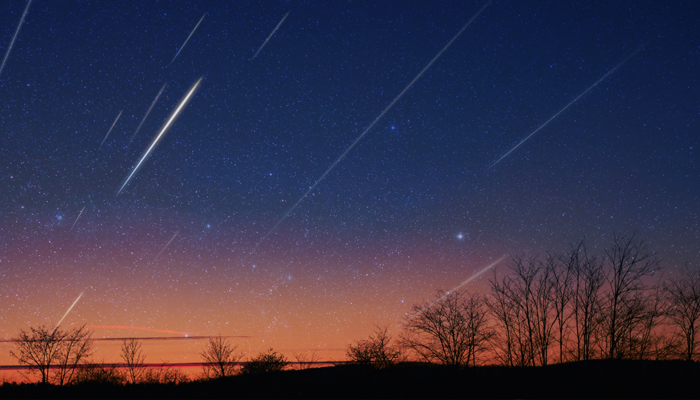"Dream, Dream, Dream! Conduct these dreams into thoughts, and then transform them into action."
- Dr. A. P. J. Abdul Kalam
"Dream, Dream, Dream! Conduct these dreams into thoughts, and then transform them into action."
- Dr. A. P. J. Abdul Kalam
8 May 2024
Meteors will streak across the sky when Earth passes through dusty debris in space left by Halley's Comet during the annual Eta Aquariid meteor shower, which peaks in early May 2024.
Here's an explanation for this meteor shower.
WHAT IS A METEOR?

The Universe is Full Of Unanswered Questions ~
( Source: Google Images)
Meteors are space rocks and other elements that burn up as they fall through Earth's atmosphere, leaving behind a dazzling streak in the sky. They are sometimes known as shooting stars or falling stars, even though they are not stars. Comets may create meteor showers because they emit dust and debris as they circle the Sun. Meteor showers occur once a year or at regular intervals as our planet passes through debris trails while orbiting the sun. It gets its name from the origination point in the sky - called the radiant - for the debris that burns up in the atmosphere in the constellation Aquarius - the "water bearer" - and close to Eta Aquarii, one of the constellation's brightest stars and one of the four stars that comprise the top of its "water jar." The meteors are not caused by Eta Aquarii or any of the other stars in the constellation.
WHEN AND WHERE CAN YOU VIEW THE METEOR SHOWER?

Look Up the Sky & Get Mesmerised ~
(Source: Google Images)
According to the American Meteor Society, the Eta Aquariids are active from April 16 to May 27, with the maximum meteor rates occurring between May 1 and 10, peaking on May 5. Meteors may be observed before sunrise in both the Northern and Southern hemispheres. The Southern Hemisphere has an advantage since the Aquarius constellation is located higher in the sky than in the Northern Hemisphere. Because the meteor activity is so light, experts recommend seeing the shower in the darkest sky possible. NASA reports that during the peak, around 30 meteors may be seen each hour.
WHAT DOES HALLEY'S COMET HAVE TO DO WITH THIS?
Comets are frozen relics of the solar system's origin, consisting of rock, dust, and ice. As they approach the sun, they emit dust and gasses. The most well-known comet is Halley's Comet, which was discovered by English astronomer Edmond Halley (1656-1742). It takes 76 years to complete one orbital loop around the Sun. It was last observed in Earth's skies in 1986 and is expected to return in 2061, according to NASA. Halley's Comet releases debris, resulting in the Eta Aquariid meteor shower. Debris from Halley's Comet also drives the annual Orionid meteor shower, which peaks in mid-October.
HOW QUICKLY DO THESE METEORS TRAVEL?

Match the Timing & Gaze the Nightsky ~
(Source: Google Images)
According to NASA, Eta Aquariid meteors are particularly speedy, moving at about 148,000 miles per hour (238,000 km per hour) into Earth's atmosphere. Such quickly moving meteors can produce glowing "trains" lasting for seconds to minutes. The American Meteor Society said meteor rates are expected to be enhanced this year by debris being perturbed by the gas giant planet Jupiter in a direction closer to Earth.
The night is falling around us. Meteors rain like fireworks, quick rips in the seam of the dark... Every second, another streak of silver glows!